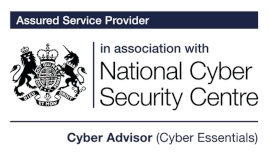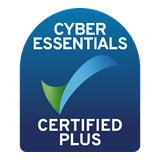6 signs your cybersecurity strategy needs an upgrade

In today’s digital age, it’s paramount to ensure the security of your business’ sensitive data and operations. Cyber threats are constantly evolving, and what worked a few years ago may no longer be sufficient.
To remedy this, cyber security experts have worked hard to innovate and strengthen cyber security solutions to help businesses built a sufficient cyber security strategy to protect their data and operations.
What is a cyber security strategy? A cyber security strategy is a comprehensive plan which outlines a business’ approach to protecting its data and operations from cyber threats. It usually consists of an array of solutions in place to protect a business against cybercrime. To stay ahead of cyber attackers, it’s essential to have a strong cyber security strategy in place that’s assessed and updated regularly to ensure it is kept up to date with the latest cyber security features.
Here’s six signs that indicate that your cyber security strategy needs an upgrade.
Sign 1: MFA is not enabled
If your business relies solely on usernames and passwords for authentication, its time for an upgrade.
Passwords alone are no longer enough to protect your business against even the most common cyber attacks. Multi-factor authentication (MFA) is a crucial component of modern cyber security.
MFA adds an extra layer of security by requiring users to provide two or more forms of authentication before gaining access to their accounts or systems. we recommend using the secure Microsoft Authenticator app which sends a push notification to your phone for quick approval of your login attempts.
In 2023, we have upgraded the MFA technology within our Geeks Cloud solution to include two things to safeguard against fatigue attacks whereby users accidentally approve login attempts from hackers.
The first is number matching, our clients receive a number or two-digit code on their device, which they then must type into their authentication app to approve the log in. The second is a geolocation context, when a log in is attempted, the authentication app provides a map and the application name that’s being logged into, so if the user gets a notification from a different location or different app, they can deny access.
Accounts with MFA enabled are 99.9% less likely to be compromised; it’s a simple yet highly effective measure that should be part of every business’ cyber security strategy.
Sign 2: You’re being asked increasingly complex questions regarding cyber security
Have you found yourself at the receiving end of complex cyber security questions you’re unable to answer? In this cyber landscape, lots of businesses are taking their cyber security seriously. When you find yourself facing increasingly complex questions related to cyber security, it’s a clear sign that the need for a strategy assessment is necessary. This often happens when you’re bidding for contracts, going for tenders, or looking to achieve certifications like the Cyber Essentials or Cyber Essentials Plus certificate.
Clients, partners and regulating bodies are now asking for proof that you have comprehensive cybersecurity measures in place. If you’re unsure about how to respond to these inquiries or lack a robust cybersecurity strategy, it’s time for an upgrade.
An up-to-date cyber security strategy not only helps you to answer complex questions, but it also demonstrates your commitment to safeguarding your sensitive data and processes.
Sign 3: You’re not sure what antivirus you’re using
Or it may be the case that you’re not entirely sure what your antivirus does…
Traditionally, antivirus software was the primary defence against cyber threats including malware, however cyber attacks have evolved, and so have cyber security solutions.
If you’re unable to confidently understand what antivirus your business has in place, it may be time to review it. We’ve recently introduced Endpoint Detection and Response (EDR) to all our clients on our Geeks Protect or Geeks Cloud solution.
EDR goes beyond traditional antivirus by actively monitoring and recording endpoint activities such as file changes, network connections and system behaviour for suspicious behaviour and potential threats.
By analysing data in real time, EDR can identify and mitigate cyber threats more effectively, and with advanced techniques such as behavioural analytics and machine learning, EDR can identify suspicious activity even if they involve previously unseen threats.
Sign 4: You don’t know whether your server is protected from ransomware
Ransomware attacks have become increasingly prevalent and can be financially devastating for businesses. If you’re uncertain whether your server is adequately protected against ransomware threats, it’s a vulnerability in your cyber security strategy that you can fix.
Upgrading your cyber security strategy to protect your server from ransomware involves a multi-layer approach. This includes regular data backups, employee training and advanced security software. It’s crucial to know that your server is protected.
Sign 5: You’re still running the same cyber security program you’ve been using for 10 years
As cyber threats evolve, so are the strategies to protect against them. If your business is still relying on the same cyber security program that’s been in place for a decade, it’s very likely outdated and ineffective against modern threats.
Regularly updating your cyber security strategy is crucial to staying ahead of cybercrime. This involves evaluating and adopting new technologies, conducting security assessments, and staying informed about the latest threats and vulnerabilities.
At Geeks, our clients receive a monthly newsletter straight to their inbox to inform them about any new technologies, tips, or recommendations to help them achieve IT excellence.
Our expert team also regularly review our solutions to update them with new technologies that benefit our clients, for example we have recently deployed EDR across our client base.
Sign 6: Your recent cyber insurance premiums have shot up
You may be asking “why have my cyber insurance premiums increased?”
If you’ve noticed your cyber insurance premiums have seen a significant increase, it’s a clear indication that your insurer believes your cyber security strategy needs an upgrade.
Cyber insurance is becoming increasingly important as businesses recognise the financial risks involved with cyber-attacks. However, insurance providers assess premiums based on your cybersecurity posture.
Higher premiums reflect a higher perceived risk of a cyber incident, a stronger cyber security strategy not only reduces your risk of a cyber-attack, but it also demonstrates to insurers that you take cyber security seriously.
You cyber security strategy requires regular reviews and adaptations to the ever-changing threat landscape. If you relate to any of these signs, it’s time to consider upgrading our cyber security strategy.
Here at Geeks, we can take care of this for you, we’re regularly reviewing technologies and updating our solutions when necessary to adapt to the digital landscape, we can also make recommendations on what Geeks Cyber solutions would suit your business.
Want to upgrade your cyber security strategy? Get in touch:





